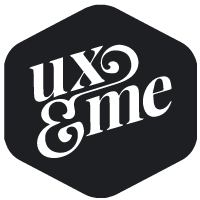[vc_row full_width=”stretch_row_content_no_spaces” full_height=”yes” el_class=”vc_row wpb_row vc_row-fluid full”][vc_column][vc_single_image image=”204″ img_size=”full” alignment=”center”][/vc_column][/vc_row][vc_row][vc_column width=”1/2″][vc_column_text]
Details
The Evo project kicked off on 9 February 2021 with a diverse, multidisciplinary, freshly assembled team spanning Christchurch, Auckland, Vancouver & Toronto. In the first 6 weeks we covered significant ground, challenged foundational business assumptions and identified opportunities that Evo, as a business, can capitalise on in years to come. My individual goals were to contribute to the formation of a business model and product strategy, define audience(s), formulate the UX plan for research, analysis and deliver prototypes for testing & production.
[/vc_column_text][/vc_column][vc_column width=”1/2″][vc_column_text]
Role
- Collaborate with product, business and marketing to align and phase out proposition for business and product strategy.
- Ensure cross team working and avoiding silos.
- Bringing together a broad set of designers, product, engineering, and business together to work through the problems, identify the opportunities and propose a solution that we’re continuing to test and bring to life for our users.
[/vc_column_text][/vc_column][/vc_row][vc_row full_width=”stretch_row_content_no_spaces” el_class=”vc_row wpb_row vc_row-fluid full” css=”.vc_custom_1641874448668{background-color: #ffd631 !important;}”][vc_column][vc_column_text css=”.vc_custom_1641874543332{margin-top: 5px !important;margin-bottom: 5px !important;margin-left: 15px !important;}”]
Research
[/vc_column_text][/vc_column][/vc_row][vc_row][vc_column][/vc_column][/vc_row][vc_row][vc_column width=”1/4″][vc_column_text]
Benchmark
Attain the benchmark from researching other API frameworks. What aspects stand out from good/bad usability, could we identify additional functionality and flow from these other like services & products?
[/vc_column_text][/vc_column][vc_column width=”3/4″][vc_single_image image=”219″ img_size=”full”][/vc_column][/vc_row][vc_row][vc_column width=”3/4″][vc_single_image image=”229″ img_size=”full”][/vc_column][vc_column width=”1/4″][vc_column_text]
User interviews
Engage with diverse range of customers and partners, spanning industries, roles and areas of expertise. These one-on-one conversations use open-ended questions to elicit stories about specific experiences that help uncover unacknowledged needs. This protocol allows the interviewer to probe more deeply into stories than a more traditional interview.
[/vc_column_text][/vc_column][/vc_row][vc_row css=”.vc_custom_1641940489694{padding-top: 20px !important;background-color: #e8e8e8 !important;}”][vc_column width=”1/4″][vc_single_image image=”221″ img_size=”120×120″ alignment=”center”][vc_column_text]
Lead with empathy
Engage with diverse customers and partners, spanning industries, roles and areas of expertise to understand their aspirations, challenges and jobs to be done.
[/vc_column_text][/vc_column][vc_column width=”1/4″][vc_single_image image=”223″ img_size=”120×120″ alignment=”center”][vc_column_text]
Desire first
In this approach, we unusually tackled the challenge of creating Evo from the desirability lens – using the needs of customers to provide objectivity and clarity in the business design process.
[/vc_column_text][/vc_column][vc_column width=”1/4″][vc_single_image image=”222″ img_size=”120×120″ alignment=”center”][vc_column_text]
Assumptions to facts
To ensure objectivity and provide clarity, we set out to identify and define assumptions and replace them with facts through interviews and feedback with users.
[/vc_column_text][/vc_column][vc_column width=”1/4″][vc_single_image image=”220″ img_size=”120×120″ alignment=”center”][vc_column_text]
Ecosystem thinking
Evo is an opportunity is to create an ecosystem that connects partners and customers and deliver a disproportionate amount of value to geology workflows.
[/vc_column_text][/vc_column][/vc_row][vc_row full_width=”stretch_row_content_no_spaces” el_class=”vc_row wpb_row vc_row-fluid full” css=”.vc_custom_1641874448668{background-color: #ffd631 !important;}”][vc_column][vc_column_text css=”.vc_custom_1641940544214{margin-top: 5px !important;margin-bottom: 5px !important;margin-left: 15px !important;}”]
Analysis
[/vc_column_text][/vc_column][/vc_row][vc_row][vc_column][/vc_column][/vc_row][vc_row][vc_column width=”1/4″][vc_column_text]
Personae
After we transcribed the interviews, segmented the audiences, we derived personae from the individuals that stood out as the main segments in each of the specified audiences.
[/vc_column_text][/vc_column][vc_column width=”3/4″][vc_single_image image=”228″ img_size=”full”][/vc_column][/vc_row][vc_row][vc_column width=”3/4″][vc_single_image image=”230″ img_size=”full”][/vc_column][vc_column width=”1/4″][vc_column_text]
User Journeys
With the following in mind:
- Identify the nature of the journeys customers take—from their point of view
- Understand how customers navigate across the touchpoints
- Anticipate the customer’s needs, expectations, and desires
- Set priorities for the most important gaps and opportunities
[/vc_column_text][/vc_column][/vc_row][vc_row][vc_column width=”1/4″][vc_column_text]
Partner value proposition canvas
The partner segmentation transformed how we look at Evo partners – from alliance, integration, and resellers to an approach which categorises partners based on their commercial reciprocal relationship with Evo.
[/vc_column_text][/vc_column][vc_column width=”3/4″][vc_single_image image=”224″ img_size=”full”][/vc_column][/vc_row][vc_row][vc_column width=”3/4″][vc_single_image image=”224″ img_size=”full”][/vc_column][vc_column width=”1/4″][vc_column_text]
Customer value proposition canvas
The customer segmentation framework shifted from focusing on industry verticals to customer categories based on behavioral traits of role types, and the jobs that they are trying to get done.
[/vc_column_text][/vc_column][/vc_row][vc_row full_width=”stretch_row_content_no_spaces” el_class=”vc_row wpb_row vc_row-fluid full” css=”.vc_custom_1641874448668{background-color: #ffd631 !important;}”][vc_column][vc_column_text css=”.vc_custom_1641940834291{margin-top: 5px !important;margin-bottom: 5px !important;margin-left: 15px !important;}”]
Ideation
[/vc_column_text][/vc_column][/vc_row][vc_row][vc_column][/vc_column][/vc_row][vc_row][vc_column width=”1/4″][vc_column_text]
Task user matrix
The general flow of the product as it is build & used within the ecosystem, this helped derive sections so that it could allow for simultaneous design and development of individual components. This helped the team view all stages of the flow on a higher level.
[/vc_column_text][/vc_column][vc_column width=”3/4″][vc_single_image image=”226″ img_size=”full”][/vc_column][/vc_row][vc_row][vc_column width=”3/4″][vc_single_image image=”227″ img_size=”full”][/vc_column][vc_column width=”1/4″][vc_column_text]
Lo-fi wireframes
We created wireframes and carried out usability tests to determine if we were successful in the direction of our strategy and flows.
[/vc_column_text][/vc_column][/vc_row][vc_row][vc_column width=”1/4″][vc_column_text]
Findings
After carrying out user tests, it is necessary to detect the improvement points, redesign the wireframes and test again. Using Maze, we were able to detect several points of improvement through painpoints and task failures. We iterated the design to improve the results.
[/vc_column_text][/vc_column][vc_column width=”3/4″][vc_single_image image=”231″ img_size=”full”][/vc_column][/vc_row]
